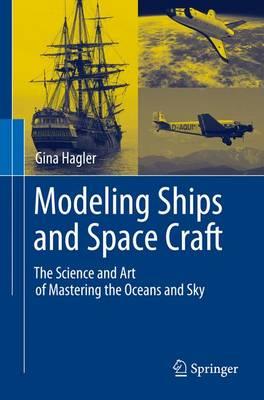Modeling Ships and Space Craft: The Science and Art of Mastering the Oceans and Sky
December 19, 2012
- author |
- Gina Hagler
- year published |
- 2012
 Since the dawn of civilization, man has gazed across the oceans and up to the stars with dreams of conquering both. What may surprise readers is that the principles behind how ships were designed in yesteryear are not so far from how today’s air and space craft are created. In a new book by Gina Hagler, Modeling Ships and Space Craft: The Science and Art of Mastering the Oceans and Sky (Springer, 2013), readers learn how the work of early ship builders informs the practices of today’s advanced engineers.
Since the dawn of civilization, man has gazed across the oceans and up to the stars with dreams of conquering both. What may surprise readers is that the principles behind how ships were designed in yesteryear are not so far from how today’s air and space craft are created. In a new book by Gina Hagler, Modeling Ships and Space Craft: The Science and Art of Mastering the Oceans and Sky (Springer, 2013), readers learn how the work of early ship builders informs the practices of today’s advanced engineers.
This new book explains in non-technical, plain language that the layman can understand, how early engineers used a basic understanding of physics to create the first ships based on science. Before the late nineteenth century, the design of boats had been based on what worked in the past, and what “should” work again. As the need for ever more complex ships grew in order to secure industrial and political control, governments and corporations wanted evidence that designs would satisfy their needs prior to production. Enter scale model testing.
Ever since William Froude proved that scale model testing yielded results that could be relied upon, it has been the accepted practice to use this methodology to perfect the designs of new vessels before construction begins. Even today’s sophisticated computer modeling techniques are based upon the same physical scale model testing used more than a century ago.
“It is really amazing when you consider that the way we build rockets and advanced aircraft today is based on the pioneering work of the very first engineers and their use of scale model testing,” said Hagler. “The principles of fluid dynamics are as true today as they were in the 1800s, and the way we study and manipulate these fundamentals is as important to launching a space shuttle as it was to building a frigate.”
This book is for anyone interested in the history of technology, specifically how we came to understand and design the marine and aeronautical vessels of today.